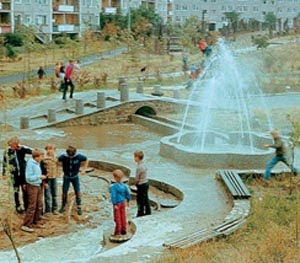'Tis the season of grant deadlines....the lifeblood of researchers such as myself. So blogging will be slow for at least another week. But that's okay, because you should all be busy with the playable kids design competition!
Hosted by the Atlanta Taskforce on Play:
Playable 2010 International Design Competition is a worldwide contest that invites designers, architects, artists, craftspeople, landscape architects, and others to create awesome and wonder-filled places for children to play.
Playable Kids is the first phase of Playable 2010 International Design Competition because kids know what is fun. We want to get their ideas together and make sure the grownups really listen. You see, we don't want to end up with some really cool designs that grownups like to look at and praise, if, at the end of the day, kids think they are lame.
The deadline of the first phase, for kids under 12, is
For all you over-12s, the second phase of the competition, which "invites designers of all types from around the world to design playground equipment and spaces that will give a sense of place, wonder and fun so strong that they will entice children outdoors to play", is due to start on March 15. Start thinking, and spread the word!
















